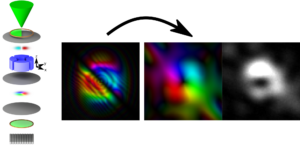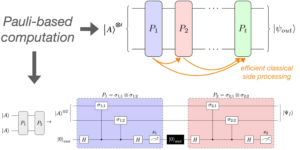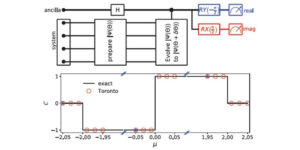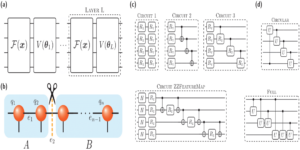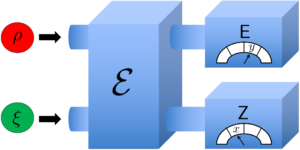1ศูนย์ข้อมูลควอนตัมและการสื่อสาร École polytechnique de Bruxelles, CP 165/59, Université libre de Bruxelles, 1050 Brussels, Belgium
2Wyant College of Optical Sciences, University of Arizona, 1630 E. University Blvd., Tucson, AZ 85721, USA
3DAMTP ศูนย์วิทยาศาสตร์คณิตศาสตร์ มหาวิทยาลัยเคมบริดจ์ Cambridge CB3 0WA สหราชอาณาจักร
4ภาควิชาฟิสิกส์ มหาวิทยาลัยเทคนิคแห่งเดนมาร์ก 2800 Kongens Lyngby ประเทศเดนมาร์ก
พบบทความนี้ที่น่าสนใจหรือต้องการหารือ? Scite หรือแสดงความคิดเห็นใน SciRate.
นามธรรม
We explore the role of majorization theory in quantum phase space. To this purpose, we restrict ourselves to quantum states with positive Wigner functions and show that the continuous version of majorization theory provides an elegant and very natural approach to exploring the information-theoretic properties of Wigner functions in phase space. After identifying all Gaussian pure states as equivalent in the precise sense of continuous majorization, which can be understood in light of Hudson's theorem, we conjecture a fundamental majorization relation: any positive Wigner function is majorized by the Wigner function of a Gaussian pure state (especially, the bosonic vacuum state or ground state of the harmonic oscillator). As a consequence, any Schur-concave function of the Wigner function is lower bounded by the value it takes for the vacuum state. This implies in turn that the Wigner entropy is lower bounded by its value for the vacuum state, while the converse is notably not true. Our main result is then to prove this fundamental majorization relation for a relevant subset of Wigner-positive quantum states which are mixtures of the three lowest eigenstates of the harmonic oscillator. Beyond that, the conjecture is also supported by numerical evidence. We conclude by discussing some implications of this conjecture in the context of entropic uncertainty relations in phase space.
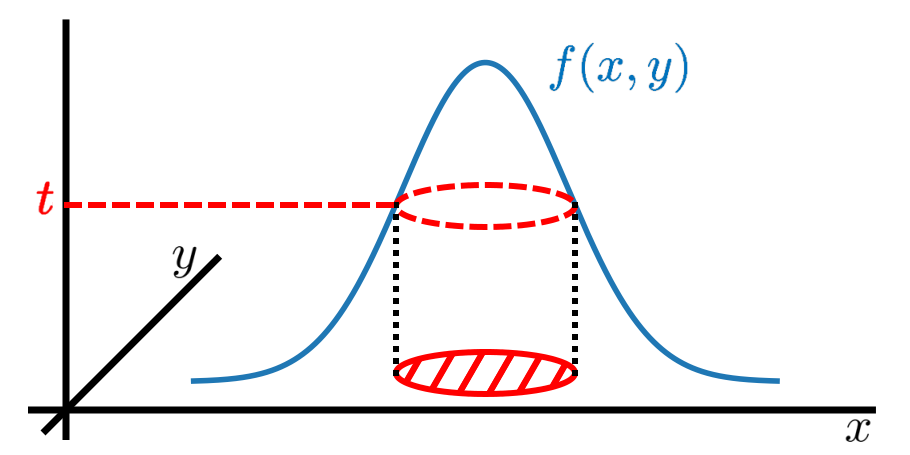
สรุปยอดนิยม
ทฤษฎีทางคณิตศาสตร์นี้ได้รับการพัฒนามากว่าหนึ่งศตวรรษแล้ว และถูกนำมาใช้ในสาขาวิทยาศาสตร์มากมาย ตั้งแต่สถิติไปจนถึงฟิสิกส์ ที่น่าทึ่งคือมันถูกนำไปใช้กับฟิสิกส์ควอนตัมเมื่อไม่นานมานี้ ซึ่งแสดงให้เห็นว่าเป็นแนวทางที่ทรงพลังสำหรับการสำรวจความพัวพันของควอนตัม ด้วยเหตุนี้ จึงไม่เคยถูกนำมาใช้เพื่อระบุลักษณะความหนาแน่นต่อเนื่องที่อธิบายตัวแปรควอนตัมในเฟสสเปซ นั่นคือ ฟังก์ชันวิกเนอร์ เราแสดงวิชาเอกอย่างต่อเนื่องเพื่อเป็นเครื่องมือที่เหมาะสมสำหรับสิ่งนี้ แรงผลักดันหลักของบทความของเราเกี่ยวข้องกับข้อความที่ว่าฟังก์ชัน Wigner ของสถานะสุญญากาศของโหมดบอสโซนิก (เช่น สถานะกราวด์ของออสซิลเลเตอร์ฮาร์มอนิก) ขยายฟังก์ชัน Wigner อื่นๆ อย่างต่อเนื่อง ทำให้มีความไม่แน่นอนน้อยลงในแง่ของการแปรเป็นสำคัญ .
ในขณะที่เราเปิดเผยและหารือเกี่ยวกับผลลัพธ์ของเราในบริบทของควอนตัมออปติก สิ่งเหล่านี้จะส่งต่อไปยังคู่ที่ยอมรับได้ ดังนั้นควรมีความหมายโดยนัยในด้านต่างๆ ของฟิสิกส์
► ข้อมูล BibTeX
► ข้อมูลอ้างอิง
[1] G. H. Hardy, J. E. Littlewood, and G. Pólya, ``Inequalities,''. Cambridge University Press, 1934.
https://doi.org/10.2307/3605504
[2] A. W. Marshall, I. Olkin, and B. C. Arnold, ``Inequalities: Theory of Majorization and its Applications,'', vol. 143. Springer, second ed., 2011.
https://doi.org/10.1007/978-0-387-68276-1
[3] T. Ando, ``Majorization, doubly stochastic matrices, and comparison of eigenvalues,'' Linear Algebra Appl. 118, 163–248 (1989).
https://doi.org/10.1016/0024-3795(89)90580-6
[4] K. Mosler, ``Majorization in economic disparity measures,'' Linear Algebra and its Applications 199, 91–114 (1994).
https://doi.org/10.1016/0024-3795(94)90343-3
[5] T. van Erven and P. Harremoës, ``Rényi divergence and majorization,'' in 2010 IEEE International Symposium on Information Theory, pp. 1335–1339, IEEE. 2010.
https://doi.org/10.1109/ISIT.2010.5513784
[6] M. A. Alhejji and G. Smith, ``A Tight Uniform Continuity Bound for Equivocation,'' in 2020 IEEE International Symposium on Information Theory (ISIT), pp. 2270–2274. 2020.
https://doi.org/10.1109/ISIT44484.2020.9174350
[7] M. G. Jabbour and N. Datta, ``A Tight Uniform Continuity Bound for the Arimoto-Rényi Conditional Entropy and its Extension to Classical-Quantum States,'' IEEE Transactions on Information Theory 68, 2169–2181 (2022).
https://doi.org/10.1109/TIT.2022.3142812
[8] A. Horn, ``Doubly Stochastic Matrices and the Diagonal of a Rotation Matrix,'' American Journal of Mathematics 76, 620–630 (1954).
https://doi.org/10.2307/2372705
[9] M. A. Nielsen, ``Conditions for a Class of Entanglement Transformations,'' Physical Review Letters 83, 436 (1999).
https://doi.org/10.1103/PhysRevLett.83.436
[10] M. A. Nielsen and G. Vidal, ``Majorization and the interconversion of bipartite states,'' Quantum Information and Computation 1, 76–93 (2001).
https://doi.org/10.26421/QIC1.1-5
[11] M. A. Nielsen and J. Kempe, ``Separable States Are More Disordered Globally than Locally,'' Physical Review Letters 86, 5184–5187 (2001).
https://doi.org/10.1103/PhysRevLett.86.5184
[12] T. Hiroshima, ``Majorization Criterion for Distillability of a Bipartite Quantum State,'' Physical Review Letters 91, 057902 (2003).
https://doi.org/10.1103/PhysRevLett.91.057902
[13] Z. Puchała, Ł. Rudnicki, and K. Życzkowski, ``Majorization entropic uncertainty relations,'' Journal of Physics A: Mathematical and Theoretical 46, 272002 (2013).
https://doi.org/10.1088/1751-8113/46/27/272002
[14] L. Rudnicki, Z. Puchała, and K. Życzkowski, ``Strong majorization entropic uncertainty relations,'' Physical Review A 89, 052115 (2014).
https://doi.org/10.1103/PhysRevA.89.052115
[15] L. Rudnicki, ``Majorization approach to entropic uncertainty relations for coarse-grained observables,'' Physical Review A 91, 032123 (2015).
https://doi.org/10.1103/PhysRevA.91.032123
[16] F. Brandão, M. Horodecki, N. Ng, J. Oppenheim, and S. Wehner, ``The second laws of quantum thermodynamics,'' Proceedings of the National Academy of Sciences 112, 3275–3279 (2015).
https://doi.org/10.1073/pnas.1411728112
[17] R. García-Patrón, C. Navarrete-Benlloch, S. Lloyd, J. H. Shapiro, and N. J. Cerf, ``Majorization Theory Approach to the Gaussian Channel Minimum Entropy Conjecture,'' Physical Review Letters 108, 110505 (2012).
https://doi.org/10.1103/PhysRevLett.108.110505
[18] C. N. Gagatsos, O. Oreshkov, and N. J. Cerf, ``Majorization relations and entanglement generation in a beam splitter,'' Physical Review A 87, 042307 (2013).
https://doi.org/10.1103/PhysRevA.87.042307
[19] G. De Palma, D. Trevisan, and V. Giovannetti, ``Passive States Optimize the Output of Bosonic Gaussian Quantum Channels,'' IEEE Transactions on Information Theory 62, 2895–2906 (2016).
https://doi.org/10.1109/TIT.2016.2547426
[20] M. G. Jabbour, R. García-Patrón, and N. J. Cerf, ``Majorization preservation of Gaussian bosonic channels,'' New Journal of Physics 18, 073047 (2016).
https://doi.org/10.1088/1367-2630/18/7/073047
[21] M. G. Jabbour and N. J. Cerf, ``Fock majorization in bosonic quantum channels with a passive environment,'' Journal of Physics A: Mathematical and Theoretical 52, 105302 (2019).
https://doi.org/10.1088/1751-8121/aaf0d2
[22] U. Leonhardt, ``Essential quantum optics: from quantum measurements to black holes,''. Cambridge University Press, 2010.
https://doi.org/10.1017/CBO9780511806117
[23] A. Hertz, M. G. Jabbour, and N. J. Cerf, ``Entropy-power uncertainty relations: towards a tight inequality for all Gaussian pure states,'' Journal of Physics A: Mathematical and Theoretical 50, 385301 (2017).
https://doi.org/10.1088/1751-8121/aa852f
[24] A. Hertz and N. J. Cerf, ``Continuous-variable entropic uncertainty relations,'' Journal of Physics A: Mathematical and Theoretical 52, 173001 (2019).
https://doi.org/10.1088/1751-8121/ab03f3
[25] C. Weedbrook, S. Pirandola, R. García-Patrón, N. J. Cerf, T. C. Ralph, J. H. Shapiro, and S. Lloyd, ``Gaussian quantum information,'' Review of Modern Physics 84, 621–669 (2012).
https://doi.org/10.1103/RevModPhys.84.621
[26] Z. Van Herstraeten and N. J. Cerf, ``Quantum Wigner entropy,'' Physical Review A 104, 042211 (2021).
https://doi.org/10.1103/PhysRevA.104.042211
[27] F. J. Narcowich, ``Distributions of $hbar$-positive type and applications,'' Journal of mathematical physics 30, 2565–2573 (1989).
https://doi.org/10.1063/1.528537
[28] T. Bröcker and R. Werner, ``Mixed states with positive Wigner functions,'' Journal of mathematical physics 36, 62–75 (1995).
https://doi.org/10.1063/1.531326
[29] RL Hudson, ``ความหนาแน่นเสมือนความน่าจะเป็นของ Wigner ไม่เป็นลบเมื่อใด,'' รายงานเกี่ยวกับฟิสิกส์คณิตศาสตร์ 6, 249–252 (1974)
https://doi.org/10.1016/0034-4877(74)90007-X
[30] F. Soto และ P. Claverie, ``ฟังก์ชัน Wigner ของระบบหลายมิติจะไม่เป็นลบเมื่อใด,'' Journal of Mathematical Physics 24, 97–100 (1983)
https://doi.org/10.1063/1.525607
[31] F. J. Narcowich and R. O’Connell, ``Necessary and sufficient conditions for a phase-space function to be a Wigner distribution,'' Physical Review A 34, 1 (1986).
https://doi.org/10.1103/PhysRevA.34.1
[32] A. Mandilara, E. Karpov, and N. J. Cerf, ``Extending Hudson's theorem to mixed quantum states,'' Physical Review A 79, 062302 (2009).
https://doi.org/10.1103/PhysRevA.79.062302
[33] A. Mandilara, E. Karpov, and N. Cerf, ``Gaussianity bounds for quantum mixed states with a positive Wigner function,'' in Journal of Physics: Conference Series, vol. 254, p. 012011, IOP Publishing. 2010.
https://doi.org/10.1088/1742-6596/254/1/012011
[34] L. Wang and M. Madiman, ``Beyond the Entropy Power Inequality, via Rearrangements,'' IEEE Transactions on Information Theory 60, 5116–5137 (2014).
https://doi.org/10.1109/TIT.2014.2338852
[35] G. H. Hardy, J. E. Littlewood, and G. Pólya, ``Some simple inequalities satisfied by convex functions,'' Messenger of Mathematics 58, 145–152 (1929).
[36] H. Joe, ``An ordering of dependence for distribution of k-tuples, with applications to lotto games,'' Canadian Journal of Statistics 15, 227–238 (1987).
https://doi.org/10.2307/3314913
[37] I. Schur, ``Uber eine Klasse von Mittelbildungen mit Anwendungen die Determinanten,'' Sitzungsberichte der Berliner Mathematischen Gesellschaft 22, 416–427 (1923).
[38] A. W. Roberts and D. E. Varberg, ``Convex functions,''. Academic Press New York, 1973.
https://doi.org/10.1016/B978-0-444-89597-4.50013-5
[39] A. Rényi, ``On measures of entropy and information,'' in Proceedings of the Fourth Berkeley Symposium on Mathematical Statistics and Probability, Volume 1: Contributions to the Theory of Statistics, vol. 4, pp. 547–562, University of California Press. 1961.
[40] Y. He, A. B. Hamza, and H. Krim, ``A generalized divergence measure for robust image registration,'' IEEE Transactions on Signal Processing 51, 1211–1220 (2003).
https://doi.org/10.1109/TSP.2003.810305
[41] J. V. Ryff, ``Orbits of $L^1$-functions under doubly stochastic transformations,'' Transactions of the American Mathematical Society 117, 92–100 (1965).
https://doi.org/10.2307/1994198
[42] F. Bahrami, S. M. Manjegani, and S. Moein, ``Semi-doubly Stochastic Operators and Majorization of Integrable Functions,'' Bulletin of the Malaysian Mathematical Sciences Society 44, 693–703 (2021).
https://doi.org/10.1007/s40840-020-00971-2
[43] S. M. Manjegani and S. Moein, ``Majorization and semidoubly stochastic operators on $ L^{1}(X)$,'' Journal of Inequalities and Applications 2023, 1–20 (2023).
https://doi.org/10.1186/s13660-023-02935-z
[44] I. Białynicki-Birula and J. Mycielski, ``Uncertainty relations for information entropy in wave mechanics,'' Communications in Mathematical Physics 44, 129–132 (1975).
https://doi.org/10.1007/BF01608825
[45] A. Wehrl, ``General properties of entropy,'' Reviews of Modern Physics 50, 221 (1978).
https://doi.org/10.1103/RevModPhys.50.221
[46] E. H. Lieb, ``Proof of an entropy conjecture of Wehrl,'' in Inequalities, pp. 359–365. Springer, 2002.
https://doi.org/10.1007/978-3-642-55925-9_30
[47] E. H. Lieb and J. P. Solovej, ``Proof of an entropy conjecture for Bloch coherent spin states and its generalizations,'' Acta Mathematica 212, 379 (2014).
https://doi.org/10.1007/s11511-014-0113-6
[48] J. R. Johansson, P. D. Nation, and F. Nori, ``QuTiP: An open-source Python framework for the dynamics of open quantum systems,'' Computer Physics Communications 183, 1760–1772 (2012).
https://doi.org/10.1016/j.cpc.2012.02.021
[49] K. Życzkowski, P. Horodecki, A. Sanpera, and M. Lewenstein, ``Volume of the set of separable states,'' Physical Review A 58, 883 (1998).
https://doi.org/10.1103/PhysRevA.58.883
อ้างโดย
[1] Nuno Costa Dias and João Nuno Prata, "On a recent conjecture by Z. Van Herstraeten and N.J. Cerf for the quantum Wigner entropy", arXiv: 2303.10531, (2023).
[2] Zacharie Van Herstraeten and Nicolas J. Cerf, "Quantum Wigner entropy", การตรวจร่างกาย A 104 4, 042211 (2021).
[3] Martin Gärttner, Tobias Haas, and Johannes Noll, "Detecting continuous variable entanglement in phase space with the $Q$-distribution", arXiv: 2211.17165, (2022).
การอ้างอิงข้างต้นมาจาก are อบต./นาซ่าโฆษณา (ปรับปรุงล่าสุดสำเร็จ 2023-05-24 23:55:18 น.) รายการอาจไม่สมบูรณ์เนื่องจากผู้จัดพิมพ์บางรายไม่ได้ให้ข้อมูลอ้างอิงที่เหมาะสมและครบถ้วน
On บริการอ้างอิงของ Crossref ไม่พบข้อมูลอ้างอิงงาน (ความพยายามครั้งสุดท้าย 2023-05-24 23:55:17)
บทความนี้เผยแพร่ใน Quantum ภายใต้ the ครีเอทีฟคอมมอนส์แบบแสดงที่มา 4.0 สากล (CC BY 4.0) ใบอนุญาต ลิขสิทธิ์ยังคงอยู่กับผู้ถือลิขสิทธิ์ดั้งเดิม เช่น ผู้เขียนหรือสถาบันของพวกเขา
- เนื้อหาที่ขับเคลื่อนด้วย SEO และการเผยแพร่ประชาสัมพันธ์ รับการขยายวันนี้
- เพลโตไอสตรีม. ข้อมูลอัจฉริยะ Web3 ขยายความรู้ เข้าถึงได้ที่นี่.
- การสร้างอนาคตโดย Adryenn Ashley เข้าถึงได้ที่นี่.
- ซื้อและขายหุ้นในบริษัท PRE-IPO ด้วย PREIPO® เข้าถึงได้ที่นี่.
- ที่มา: https://quantum-journal.org/papers/q-2023-05-24-1021/
- :มี
- :เป็น
- :ไม่
- :ที่ไหน
- ][หน้า
- 1
- 10
- 11
- 12
- 13
- 14
- ลด 15%
- 17
- 1934
- 1994
- 1998
- 1999
- 20
- 2001
- 2011
- 2012
- 2013
- 2014
- 2015
- 2016
- 2017
- 2019
- 2020
- 2021
- 2022
- 2023
- 22
- 23
- 24
- 26
- 27
- 28
- 30
- 39
- 40
- 49
- 50
- 60
- 7
- 8
- 84
- 87
- 9
- 91
- a
- ข้างบน
- บทคัดย่อ
- นักวิชาการ
- วิทยาลัย
- เข้า
- แม่นยำ
- จริง
- ความผูกพัน
- หลังจาก
- มาแล้ว
- ทั้งหมด
- ด้วย
- อเมริกัน
- an
- และ
- ใด
- การใช้งาน
- ประยุกต์
- เข้าใกล้
- เป็น
- พื้นที่
- อาริโซน่า
- AS
- ผู้เขียน
- ผู้เขียน
- BE
- คาน
- รับ
- เบิร์กลีย์
- เกิน
- Black
- หลุมดำ
- ขอบเขต
- ทำลาย
- บรัสเซลส์
- แถลงการณ์
- by
- แคลิฟอร์เนีย
- เคมบริดจ์
- CAN
- ชาวแคนาดา
- จับ
- พกพา
- ศูนย์
- ศตวรรษ
- ช่อง
- ช่อง
- สมบัติ
- ชั้น
- สอดคล้องกัน
- วิทยาลัย
- ความเห็น
- สภาสามัญ
- การสื่อสาร
- คมนาคม
- การเปรียบเทียบ
- สมบูรณ์
- การคำนวณ
- คอมพิวเตอร์
- ความกังวลเกี่ยวกับ
- สรุป
- เงื่อนไข
- การประชุม
- การคาดเดา
- สิ่งแวดล้อม
- ต่อเนื่องกัน
- ผลงาน
- นูนออก
- ลิขสิทธิ์
- ได้
- ข้อมูล
- มัน
- เดนมาร์ก
- การพึ่งพาอาศัยกัน
- บรรยาย
- พัฒนา
- ตาย
- สนทนา
- พูดคุย
- การกระจาย
- การแตกต่าง
- เป็นทวีคูณ
- พลศาสตร์
- e
- ด้านเศรษฐกิจ
- ed
- สิ่งแวดล้อม
- เท่ากัน
- โดยเฉพาะอย่างยิ่ง
- อีเธอร์ (ETH)
- หลักฐาน
- ใช้ประโยชน์
- สำรวจ
- สำรวจ
- นามสกุล
- ที่น่าสนใจ
- สาขา
- เหมาะสม
- สำหรับ
- พบ
- ที่สี่
- กรอบ
- ราคาเริ่มต้นที่
- ฟังก์ชัน
- ฟังก์ชั่น
- พื้นฐาน
- เกม
- รุ่น
- ทั่วโลก
- พื้น
- ฮาร์วาร์
- มี
- he
- โปรดคลิกที่นี่เพื่ออ่านรายละเอียดเพิ่มเติม
- เฮิรตซ์
- ผู้ถือ
- หลุม
- HTTPS
- i
- ระบุ
- อีอีอี
- ภาพ
- ผลกระทบ
- in
- ความไม่เท่าเทียมกัน
- ความไม่เสมอภาค
- ข้อมูล
- สถาบัน
- น่าสนใจ
- International
- แนะนำ
- IT
- ITS
- JavaScript
- วารสาร
- ชื่อสกุล
- ต่อมา
- กฎหมาย
- ทิ้ง
- น้อยลง
- License
- เบา
- รายการ
- ในท้องถิ่น
- ต่ำที่สุด
- ทำ
- หลัก
- การทำ
- ชาวมาเลเซีย
- นกนางแอ่น
- คณิตศาสตร์
- คณิตศาสตร์
- มดลูก
- ความกว้างสูงสุด
- อาจ..
- วิธี
- วัด
- วัด
- มาตรการ
- กลศาสตร์
- Messenger
- ไมเคิล
- ขั้นต่ำ
- เอ็มไอที
- ผสม
- โหมด
- ทันสมัย
- โมเมนตัม
- เดือน
- ข้อมูลเพิ่มเติม
- มากที่สุด
- คือ
- ประเทศชาติ
- แห่งชาติ
- โดยธรรมชาติ
- ไม่เคย
- ใหม่
- นิวยอร์ก
- นิโคลัส
- ไม่
- ยวด
- มากมาย
- of
- on
- ONE
- เพียง
- เปิด
- โอเพนซอร์ส
- ผู้ประกอบการ
- เลนส์
- เพิ่มประสิทธิภาพ
- or
- ใบสั่ง
- เป็นต้นฉบับ
- อื่นๆ
- ของเรา
- ตัวเรา
- เอาท์พุต
- เกิน
- คู่
- คู่
- กระดาษ
- ตัวอย่าง
- อนุภาค
- อยู่เฉยๆ
- ระยะ
- กายภาพ
- ฟิสิกส์
- เพลโต
- เพลโตดาต้าอินเทลลิเจนซ์
- เพลโตดาต้า
- ตำแหน่ง
- บวก
- อำนาจ
- ที่มีประสิทธิภาพ
- จำเป็นต้อง
- ที่คาดการณ์
- การเก็บรักษา
- กด
- หลัก
- ความน่าจะเป็น
- กิจการ
- การประมวลผล
- เหมาะสม
- คุณสมบัติ
- พิสูจน์
- ให้
- ให้
- การตีพิมพ์
- สำนักพิมพ์
- สำนักพิมพ์
- การประกาศ
- วัตถุประสงค์
- หลาม
- ปริมาณ
- ควอนตัม
- ความพัวพันของควอนตัม
- ข้อมูลควอนตัม
- ควอนตัมออปติก
- ฟิสิกส์ควอนตัม
- ระบบควอนตัม
- ตั้งแต่
- จัดเรียงใหม่
- เมื่อเร็ว ๆ นี้
- เมื่อเร็ว ๆ นี้
- การอ้างอิง
- ลงทะเบียน
- ความสัมพันธ์
- ความสัมพันธ์
- สัมพัทธ์
- ตรงประเด็น
- ซากศพ
- รายงาน
- จำกัด
- ผล
- ผลสอบ
- ทบทวน
- รีวิว
- แข็งแรง
- บทบาท
- s
- ความพึงพอใจ
- วิทยาศาสตร์
- วิทยาศาสตร์
- ที่สอง
- ดูเหมือน
- ความรู้สึก
- ชุด
- ชุด
- น่า
- โชว์
- แสดง
- สัญญาณ
- ง่าย
- พร้อมกัน
- สังคม
- บาง
- ช่องว่าง
- สปิน
- สถานะ
- คำแถลง
- สหรัฐอเมริกา
- สถิติ
- แข็งแกร่ง
- ประสบความสำเร็จ
- อย่างเช่น
- เพียงพอ
- เหมาะสม
- ที่สนับสนุน
- การประชุมสัมมนา
- ระบบ
- ใช้เวลา
- วิชาการ
- กว่า
- ที่
- พื้นที่
- ของพวกเขา
- แล้วก็
- ตามทฤษฎี
- ทฤษฎี
- ดังนั้น
- พวกเขา
- นี้
- สาม
- ชื่อหนังสือ
- ไปยัง
- เครื่องมือ
- ไปทาง
- การทำธุรกรรม
- การแปลง
- จริง
- กลับ
- การหมุน
- ชนิด
- มีความไม่แน่นอน
- ความไม่แน่นอน
- ภายใต้
- ความเข้าใจ
- เข้าใจ
- พร้อมใจกัน
- มหาวิทยาลัย
- มหาวิทยาลัยแห่งแคลิฟอร์เนีย
- มหาวิทยาลัยเคมบริดจ์
- ให้กับคุณ
- URL
- มือสอง
- สูญญากาศ
- ความคุ้มค่า
- ต่างๆ
- รุ่น
- มาก
- ผ่านทาง
- ปริมาณ
- ของ
- W
- ต้องการ
- คือ
- คลื่น
- we
- ที่
- ในขณะที่
- กับ
- โรงงาน
- X
- ปี
- ปี
- ยัง
- นิวยอร์ก
- ลมทะเล



